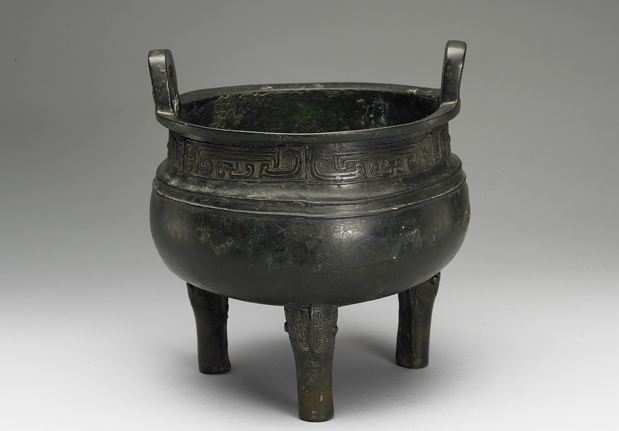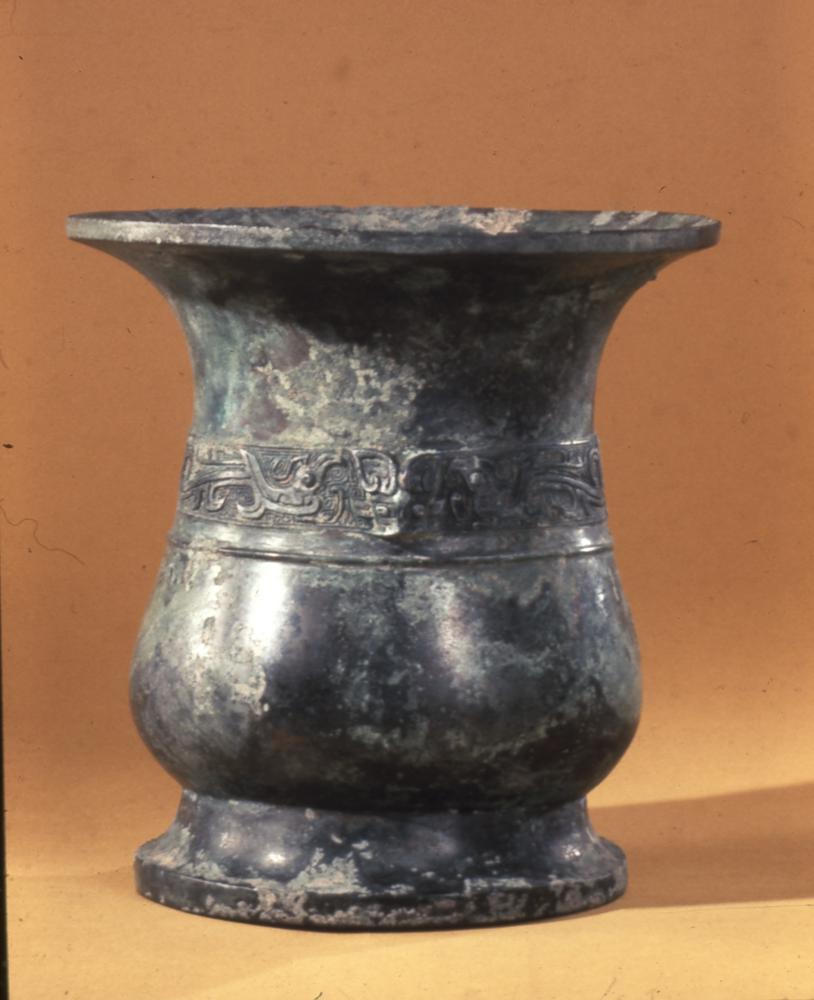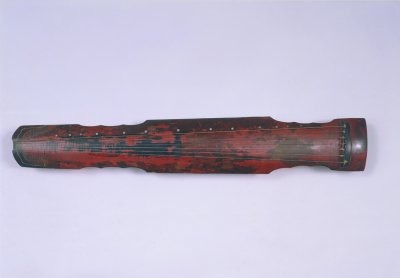Period:Ming dynasty Production date:1506-1521
Materials:porcelain
Technique:glazed, painted, underglazed,
Subjects:fruit lotus
Dimensions:Diameter: 21.40 centimetres Height: 4.50 centimetres
Description:
Porcelain dish with underglaze blue decoration and a yellow enamel ground. This thickly potted dish has rounded sides and a thick tapering foot. It is decorated inside and out with underglaze blue flowering and fruiting plants with a thin yellow enamel ground. Gardenias are shown in a central double ring with, in turn, single sprays of fruiting pomegranates, flowering lotus tied in a bunch, fruiting peaches and a fruiting grape vine in the well. Outside it is decorated with a continuous flower scroll of camellias. The inner and outer rim, foot and join of foot to body are also outlined with double blue lines. The base carries an underglaze blue six-character Zhengde reign mark in a double ring.
IMG
![图片[1]-dish BM-1929-0722.11-China Archive](https://chinaarchive.net/Ming dynasty/Ceramics/mid_00269341_001.jpg)
Comments:Harris bought it from Bluetts in 1925 for £9.10, Bluetts had bought it from Laurent Heliot in Paris. DJ Harrison-Hall 2001:Many of the imperial porcelains commissioned in the sixteenth century were based on earlier fifteenth-century prototypes. This design was first introduced in the Xuande era and continued to be made with minor variations until the end of the sixteenth century. Many other examples of Zhengde period porcelain dishes with the same design survive in public museums and private collections. Other such dishes are in the Percival David Foundation of Chinese Art, London, the private Koger collection, the Fogg Art Museum, Harvard, the Matsuoka Museum of Art, Tokyo, and the Freer Gallery of Art, Washington DC. A dish with a similar colour scheme but with different flowers from the Ataka Collection is in the Museum of Oriental Ceramics, Osaka.
Materials:porcelain
Technique:glazed, painted, underglazed,
Subjects:fruit lotus
Dimensions:Diameter: 21.40 centimetres Height: 4.50 centimetres
Description:
Porcelain dish with underglaze blue decoration and a yellow enamel ground. This thickly potted dish has rounded sides and a thick tapering foot. It is decorated inside and out with underglaze blue flowering and fruiting plants with a thin yellow enamel ground. Gardenias are shown in a central double ring with, in turn, single sprays of fruiting pomegranates, flowering lotus tied in a bunch, fruiting peaches and a fruiting grape vine in the well. Outside it is decorated with a continuous flower scroll of camellias. The inner and outer rim, foot and join of foot to body are also outlined with double blue lines. The base carries an underglaze blue six-character Zhengde reign mark in a double ring.
IMG
![图片[1]-dish BM-1929-0722.11-China Archive](https://chinaarchive.net/Ming dynasty/Ceramics/mid_00269341_001.jpg)
Comments:Harris bought it from Bluetts in 1925 for £9.10, Bluetts had bought it from Laurent Heliot in Paris. DJ Harrison-Hall 2001:Many of the imperial porcelains commissioned in the sixteenth century were based on earlier fifteenth-century prototypes. This design was first introduced in the Xuande era and continued to be made with minor variations until the end of the sixteenth century. Many other examples of Zhengde period porcelain dishes with the same design survive in public museums and private collections. Other such dishes are in the Percival David Foundation of Chinese Art, London, the private Koger collection, the Fogg Art Museum, Harvard, the Matsuoka Museum of Art, Tokyo, and the Freer Gallery of Art, Washington DC. A dish with a similar colour scheme but with different flowers from the Ataka Collection is in the Museum of Oriental Ceramics, Osaka.
© Copyright
The copyright of the article belongs to the author, please keep the original link for reprinting.
THE END





